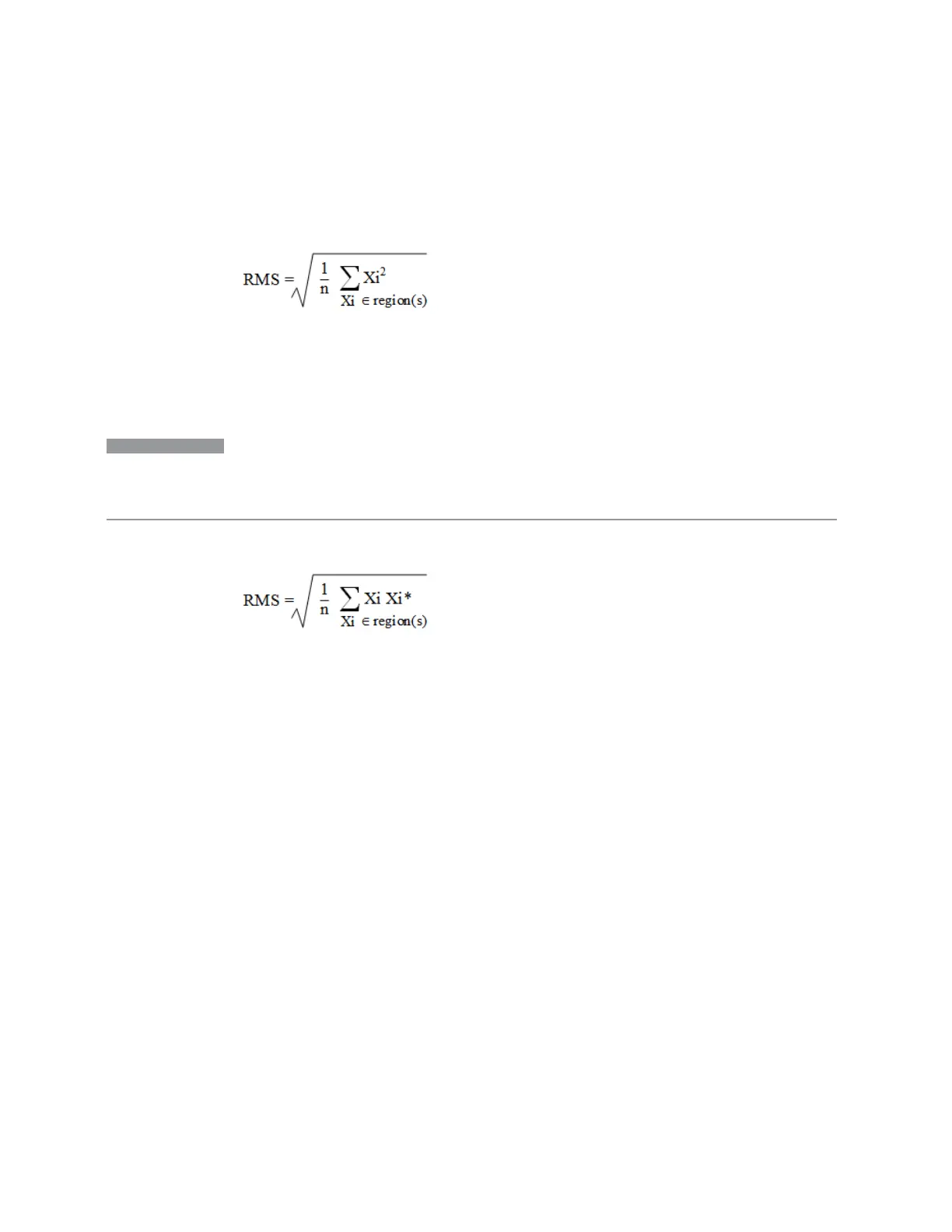9 Programming the Instrument
9.3 SCPI Operation and Results Query
data. See the following equation.
Equation 4: RMS Value of Data Points for Specified Region(s)
where Xi is a data point value, and n is the number of data points in the specified
region(s).
For I/Q trace data, the rms of the magnitudes of the I/Q pairs is returned. See the
following equation.
NOTE
This function is very useful for I/Q trace data. However, if the original trace data
is in dB, this function returns the rms of the log values which is not usually
needed.
Equation 5: RMS Value of I/Q Data Pairs for Specified Region(s)
where Xi is the complex value representation of an I/Q pair, Xi* its conjugate
complex number, and n is the number of I/Q pairs in the specified region(s).
Once you have the rms value for a region of trace data (linear or I/Q), you may want
to calculate the mean power. You must convert this rms value (peak volts) to power
in dBm:
10 x log[10 * (rms value)2]
SAMPle
Returns the first data value (x,y pair) for the specified region(s) of trace data. For I/Q
trace data, the first I/Q pair is returned.
SDEViation
Returns a single value that is the arithmetic standard deviation for the data point
values for the specified region(s) of trace data. See the following equation.
Equation 6: Standard Deviation of Data Point Values for Specified Region(s)
Spectrum Analyzer Mode User's &Programmer's Reference 2764

